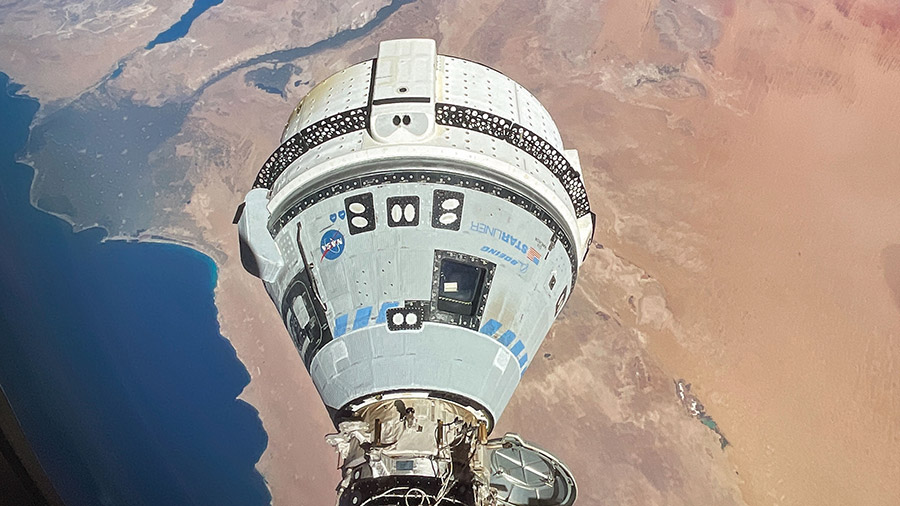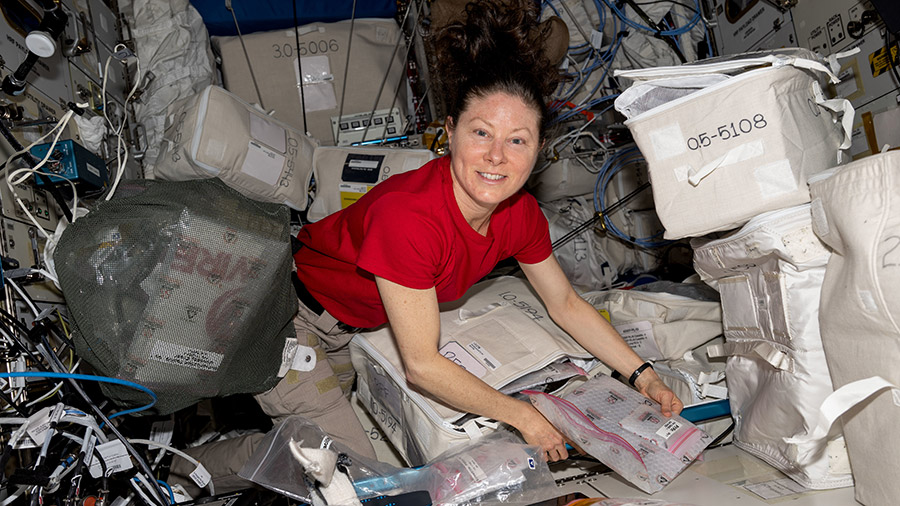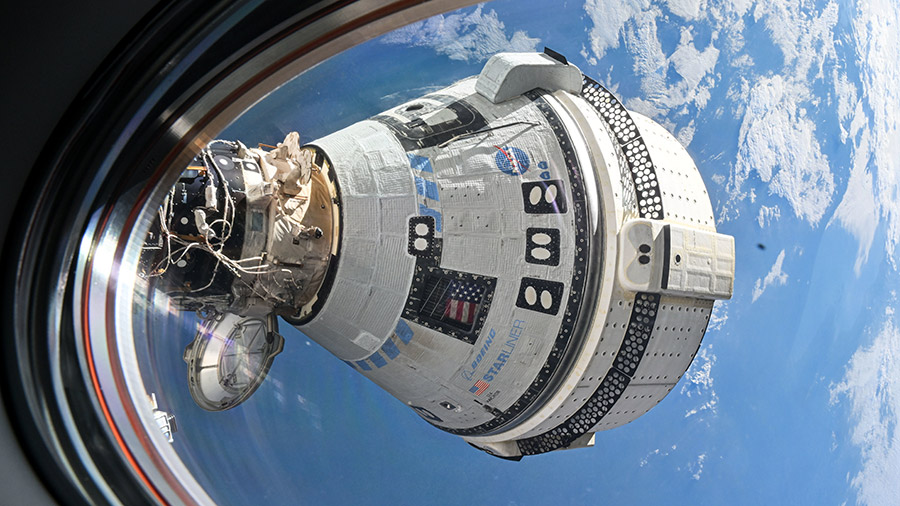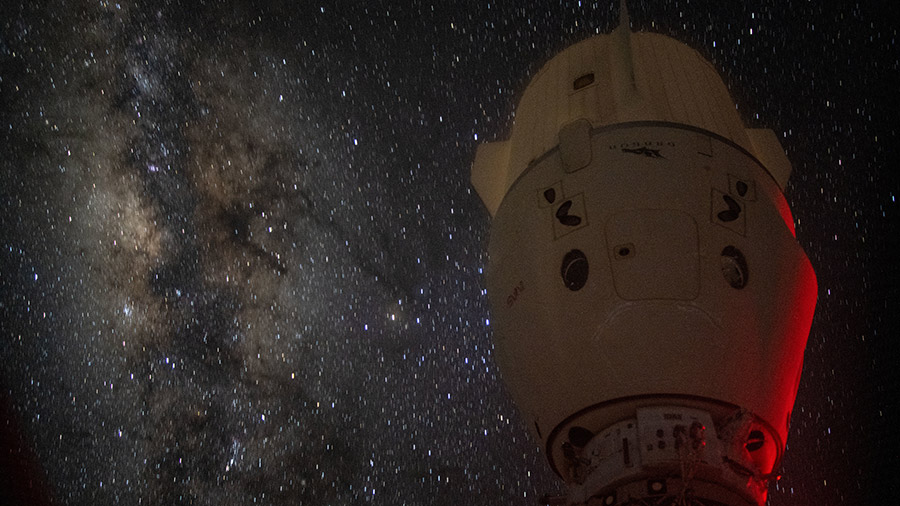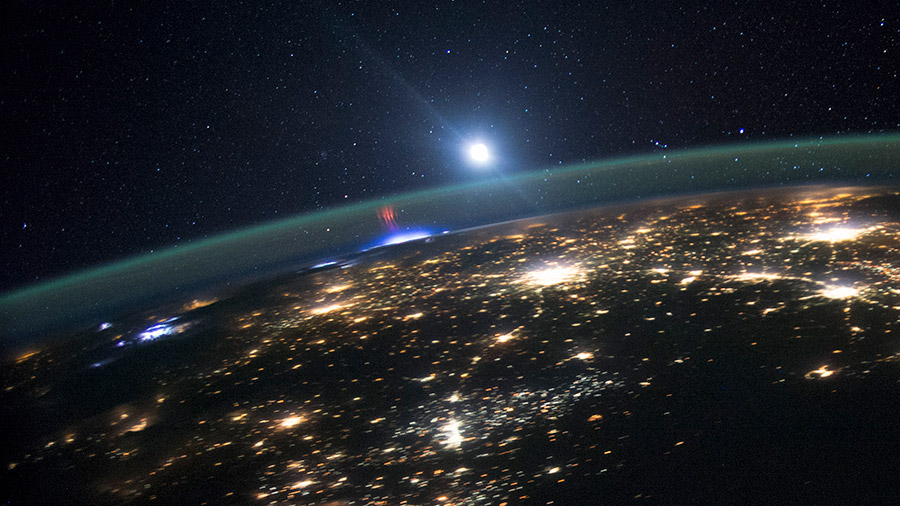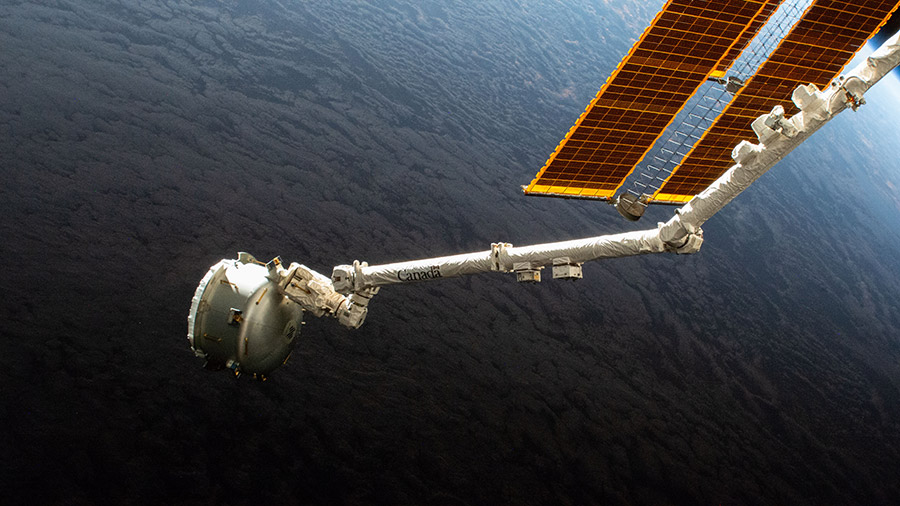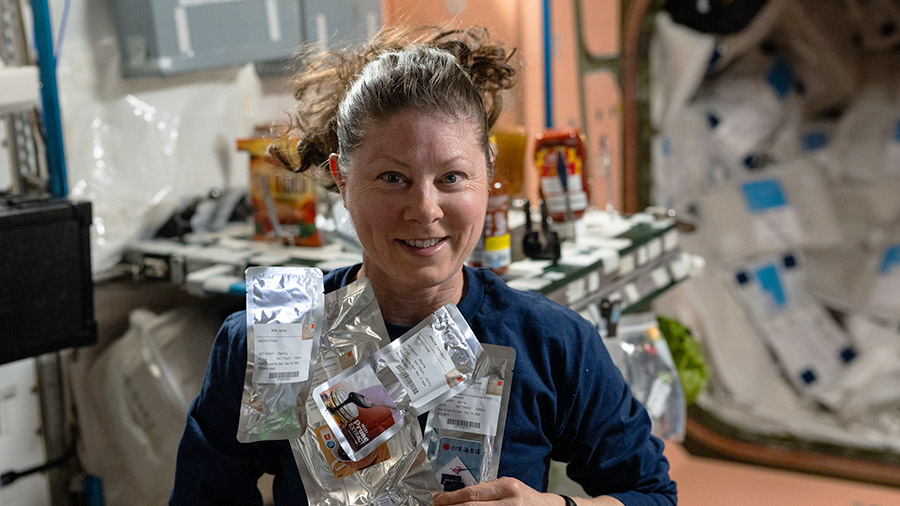
Spacesuits, robotics, and maintenance were the main priorities for the Expedition 71 and NASA’s Boeing Crew Flight Test crews after the International Space Station raised its orbit on Wednesday. The nine orbital residents also split their day on a variety of human research activities and docked crew spaceship activities.
NASA Flight Engineer Matthew Dominick evaluated a spacesuit in the Quest airlock today with assistance from fellow NASA astronaut Mike Barratt. The duo powered up the spacesuit, configured its components, and tested the suit’s communications and life support systems during Dominick’s fit verification.
Astrobee free-flying robotic assistants, powered by fans and a vision-based navigation system, were maneuvering inside the Kibo laboratory module during the Astrobee Zero Robotics 3 finals competition on Wednesday. The Astrobees were controlled and manipulated by winning algorithms written by students on Earth and downloaded to the robotics platform by mission controllers. NASA Flight Engineer Tracy C. Dyson readied the toaster-sized, cube-shaped Astrobees then monitored the contest designed to encourage students to pursue careers in science, engineering, and space exploration.
During the morning, NASA Flight Engineer Jeanette Epps removed blood samples that were stowed overnight inside the Kubik research incubator. She spun those samples in a centrifuge before placing them inside a science freezer for preservation and later analysis to understand microgravity’s effect on humans. Afterward, Epps conducted several hours of airflow measurements inside the crew quarters located in the Harmony module’s deck compartment to maintain ventilation systems and crew health.
Starliner Commander Butch Wilmore and Suni Williams, both NASA astronauts, had their day packed primarily with lab upkeep duties aboard the orbiting outpost. Wilmore spent his morning inspecting advanced plumbing hardware then packed the life support components for return to Earth. Williams set up high-definition video gear inside the Columbus laboratory module then inspected a bar code reader and radio frequency hardware. The duo also partnered up and organized cargo packed inside the Tranquility module before calling down to Boeing mission controllers for a conference.
The space station is orbiting higher today after the docked Progress 87 cargo craft fired its thrusters for over 20 minutes early Wednesday morning. The orbital reboost places the station at the correct altitude to receive the next cargo craft from Roscosmos after it launches in mid-August.
Commander Oleg Kononenko examined the cargo space available inside the Nauka and Rassvet modules to prepare for the upcoming space delivery. The five-time station visitor also inspected the telerobotically operated rendezvous unit, or TORU, in the Zvezda service module. The TORU would be used to remotely control an approaching Roscosmos resupply ship in the unlikely event the spacecraft would be unable to complete its automated docking sequence.
Roscosmos Flight Engineers Nikolai Chub and Aleksander Grebenkin had their day full as they conducted a variety of space research and maintained orbital lab systems on Wednesday. Chub continued studying how magnetic and electrical fields affect fluid physics and serviced life support systems. Grebenkin pointed a digital video camera out a station window and videotaped the condition of the Roscosmos segment modules for analysis.
Learn more about station activities by following the space station blog, @space_station and @ISS_Research on X, as well as the ISS Facebook and ISS Instagram accounts.
Get weekly video highlights at: https://roundupreads.jsc.nasa.gov/videoupdate/
Get the latest from NASA delivered every week. Subscribe here: www.nasa.gov/subscribe



